INDEX
- English
- 日本語
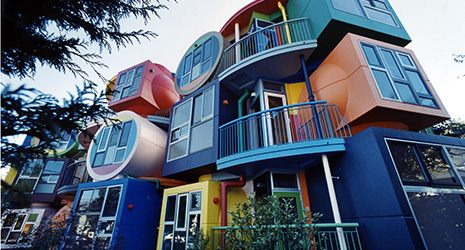
The Reversible Destiny Lofts Mitaka - English
- 日本語

Interior of a short-stay loft
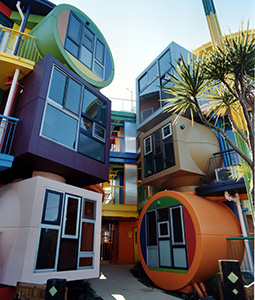
The housing complex comprises nine units of different shapes 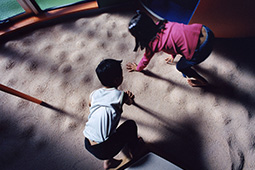
Children play on a bumpy floor 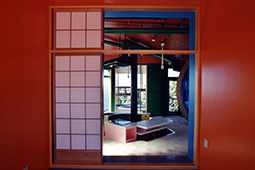
Six or more colors are visible at any one time 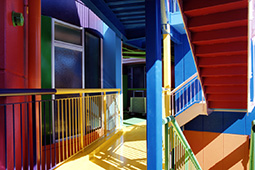
Colorfully painted hallways and stairs
October 2020
A Candy-Colored Residence

An apartment complex on the outskirts of Tokyo doubles as a work of art, stimulating the senses of its residents, short-stay visitors and local people alike.

In Mitaka City, a quiet residential area in the suburbs of Tokyo, stands a colorful and rather peculiar-looking building. Called “The Reversible Destiny Lofts Mitaka (In Memory of Helen Keller),” the building was jointly designed by Arakawa Shusaku (1936–2010) and his partner Madeline Gins (1941–2014), artists and architects who were active internationally from the 1960s into the early 2000s.

Completed in 2005, the building is based on Arakawa and Gins’ hallmark concept of “reversible destiny.” As such, it is designed “not to die,” by continually stimulating those who live in or visit it. The design was inspired by Helen Keller, a deaf-blind person revered by the artists for the kind of “reversible destiny” she achieved through her way of life.
The complex comprises nine units in three shapes: spherical, cylindrical and cubic. Conventional steel beams were not used anywhere in the construction, except for the lofts’ connecting hallways and stairs. The exterior is painted in fourteen vivid hues. The interior, too, is an organized riot of color.

Matsuda Takeyoshi, Manager of The Reversible Destiny Lofts Mitaka, says, “Locals and taxi drivers call this the ‘colorful house,’ and it has become a landmark.”
The Reversible Destiny Lofts Mitaka is a work of functional art intended to activate the senses through colors and shapes. Although the color scheme of the interior appears at first glance to be chaotic, in fact it was designed so that at least six different colors are visible at once. The effect is oddly relaxing. Matsuda explains, “Just as in nature, which is teeming with a limitless number of colors, when six or more colors enter our field of vision, we unconsciously recognize them as color as a whole and not as individual colors.”

It is not just through the eyes that the building stimulates the senses. Among the unusual interior features are the bumpy floors, which softly force users to be continually aware of their own feet when walking.
Five of the nine lofts are rented as homes, while the others can be rented for a short stay of a minimum four days. Guided tours can also be arranged.

For Arakawa and Gins, the artwork that is Reversible Destiny Lofts “can only be completed once people live in it.” Inspiring by this idea, every year, around 1,000 people from Japan and around the world visit the lofts.

